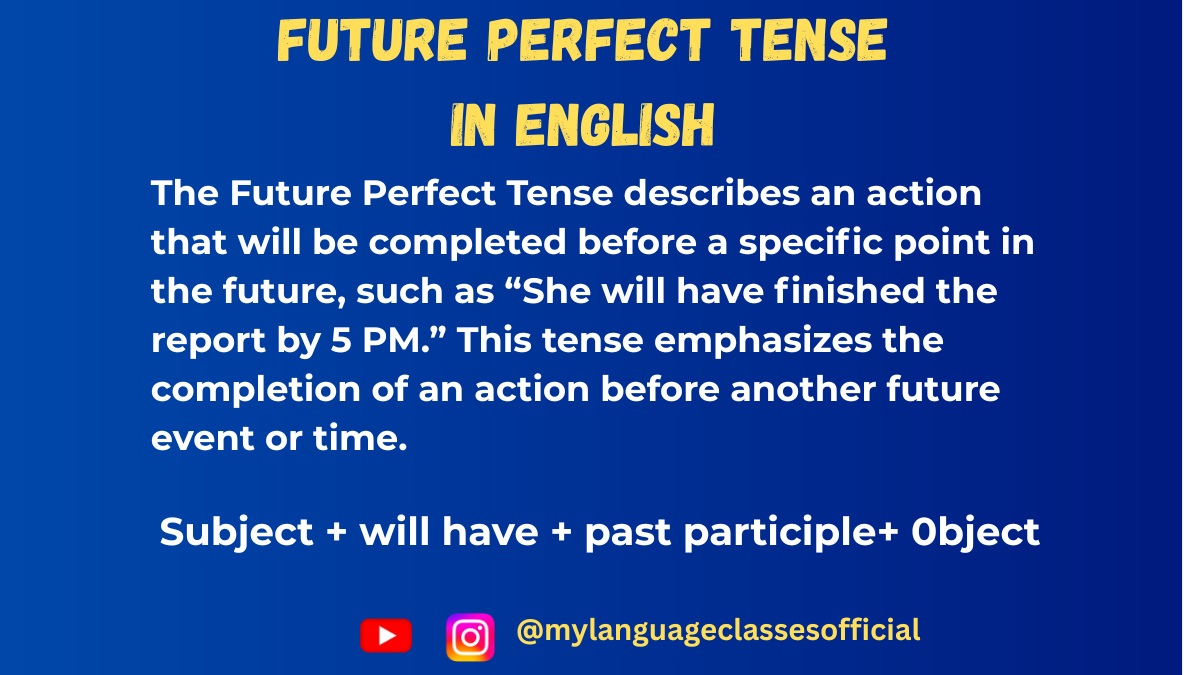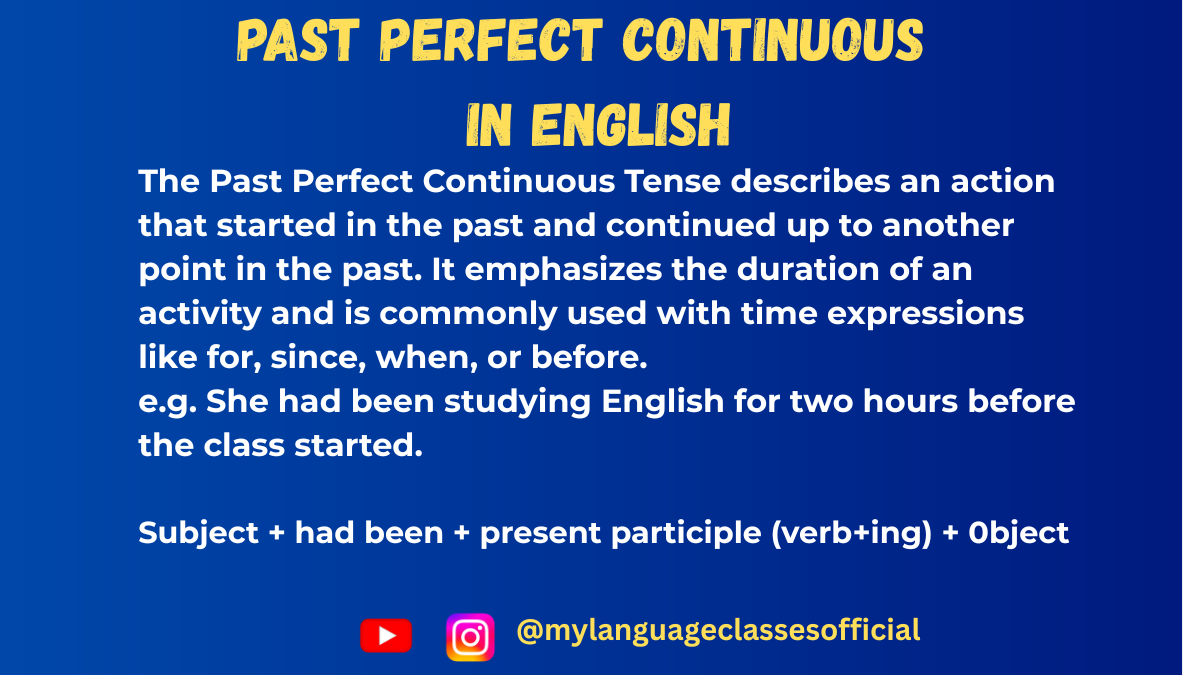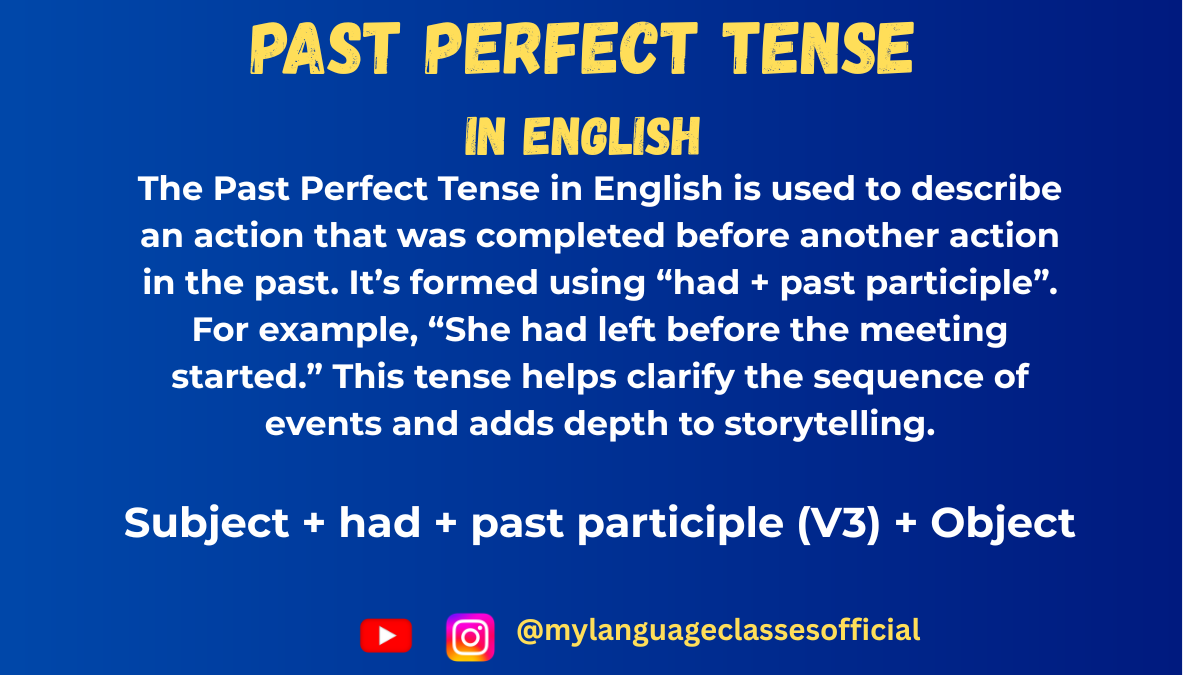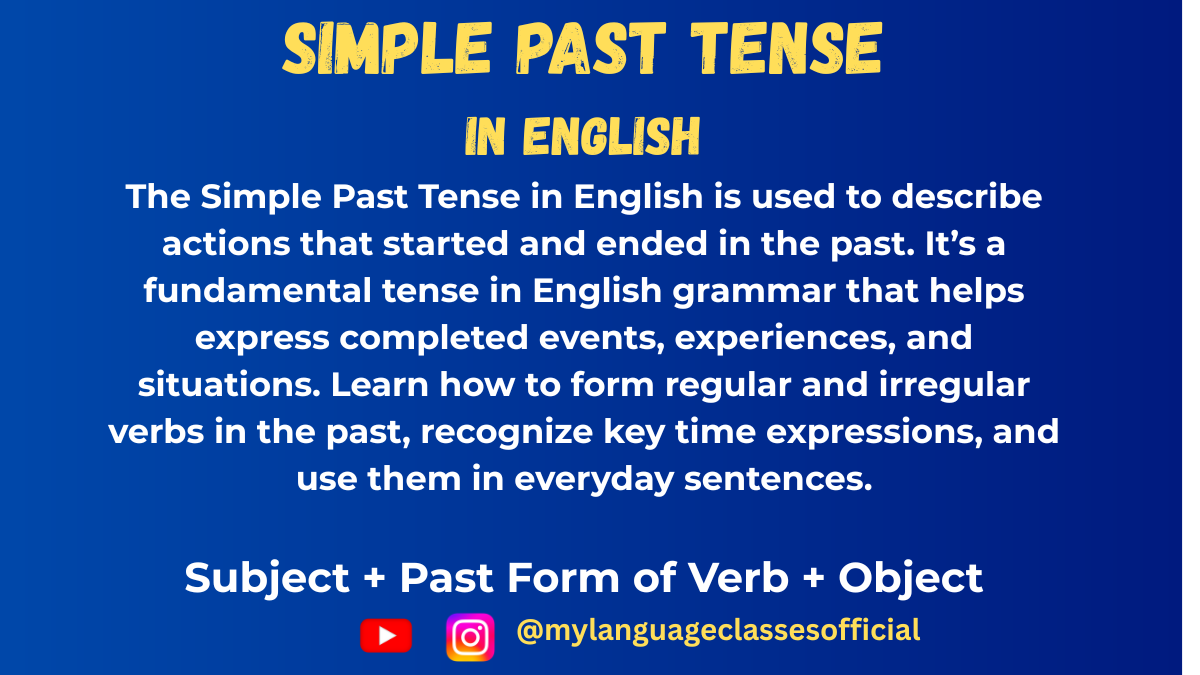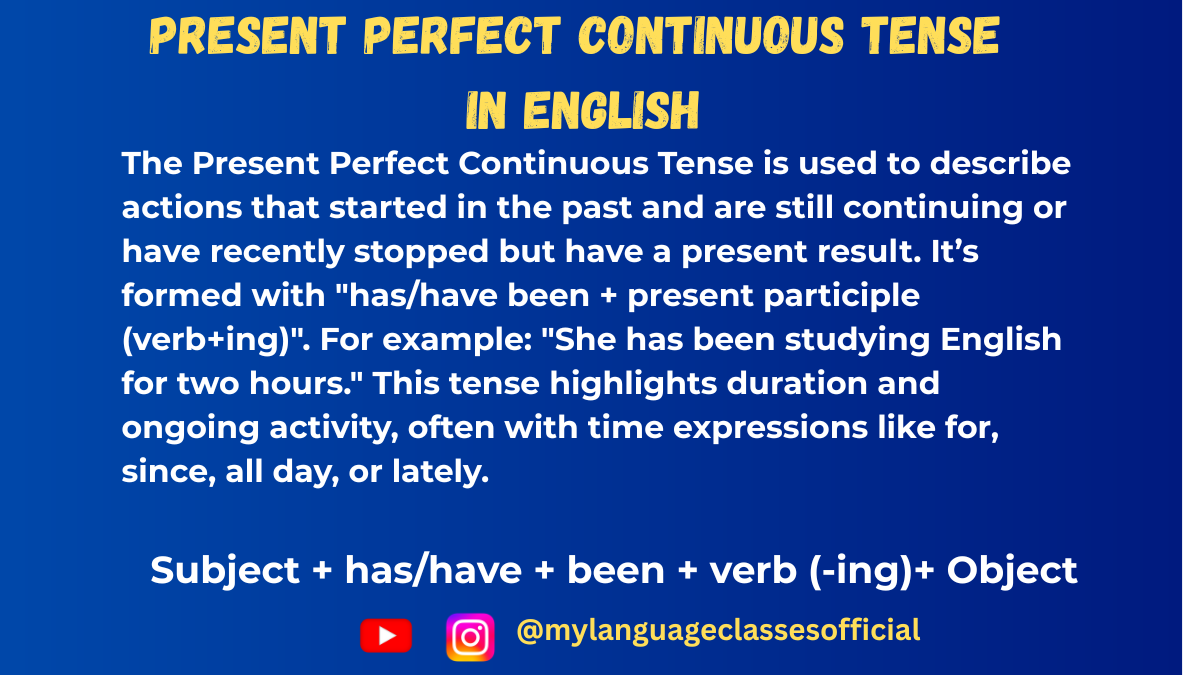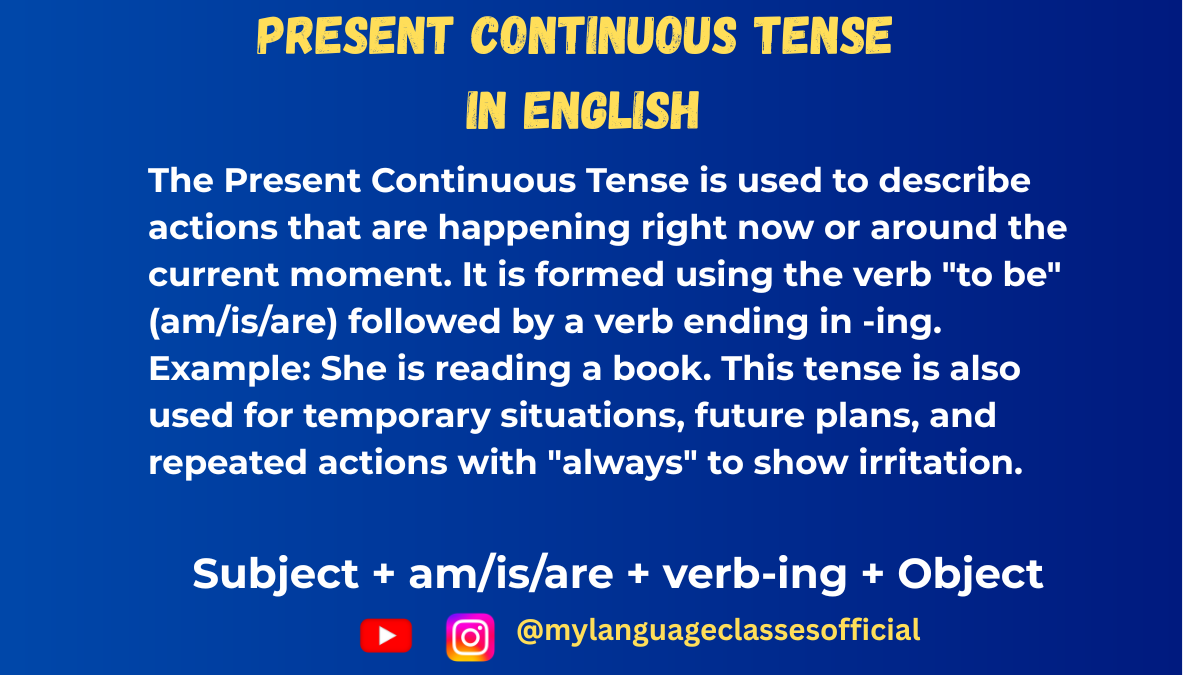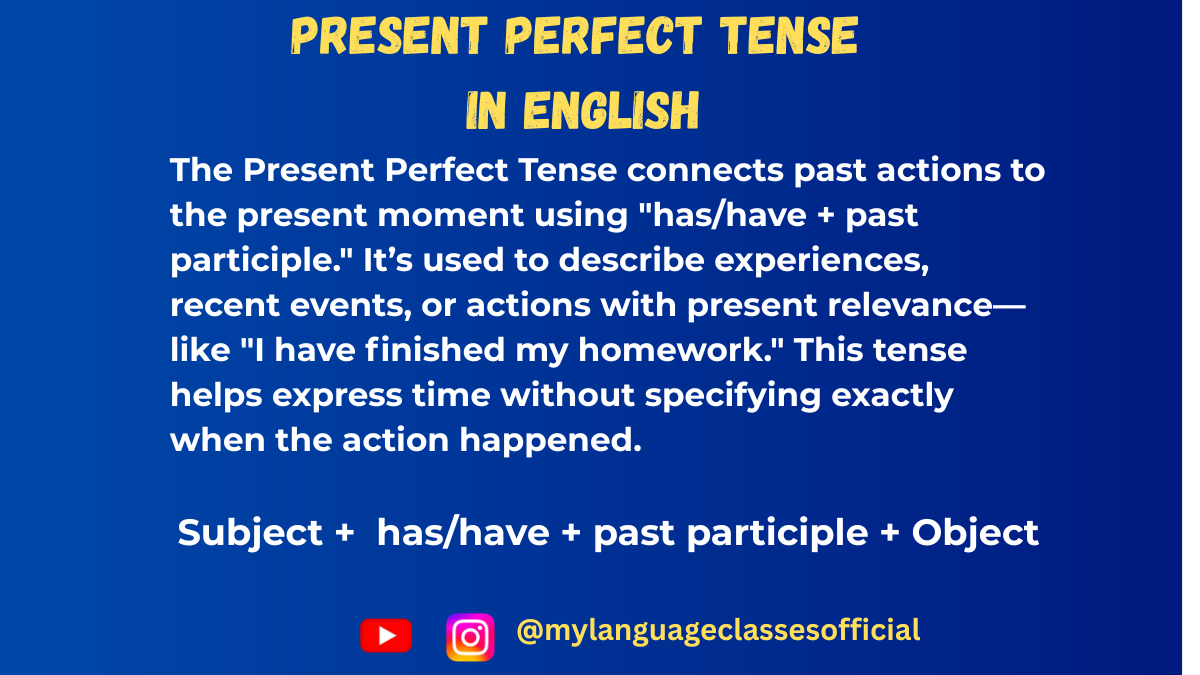Your cart is currently empty!
Tag: English Tenses

Future Perfect Continuous Tense in English: Grammar Rules, Usage & Examples
Future Perfect Continuous Tense in English: Easy Guide with Rules, Examples, and Exercises
Have you ever wondered how to talk about an action that will still be going on in the future—and for a specific amount of time? That’s … Read more

Future Continuous Tense in English: Grammar Rules, Usage & Examples
Future Continuous Tense in English: Learn How to Use It with Examples, Grammar Rules, and Easy Tips
Have you ever wondered how to talk about something that will be happening at a certain time in the future? That’s where the … Read more

Future Perfect Tense in English: Grammar Rules, Usage & Examples
Future Perfect Tense in English: Complete Guide with Easy Rules, Examples, and Exercises
Have you ever wondered how to talk about something that will be finished before a certain time in the future? Maybe you’ve said things like, “I … Read more

Simple Future Tense in English: Grammar Rules, Usage & Examples
Simple Future Tense in English: How to Use ‘Will’ and ‘Going to’ Like a Native Speaker
Do you want to speak confidently about future plans, dreams, or predictions in English? Whether you’re learning English as a second language or just … Read more

Past Perfect Continuous Tense in English: Grammar Rules, Usage & Examples
Past Perfect Continuous Tense in English: Simple Guide with Examples, Rules, and Practice
Have you ever wondered how to talk about an action that started in the past and continued up until another point in the past? That’s where the … Read more

Past Continuous Tense in English: Grammar Rules, Usage & Examples
Past Continuous Tense in English: Definition, Usage, Rules, and Examples for Everyday Conversations
Have you ever tried to describe what you were doing at a specific moment in the past? Maybe you were watching a movie when the phone rang … Read more

Past Perfect Tense in English: Grammar Rules, Usage & Examples
Mastering the Past Perfect Tense in English: Grammar Rules, Example and Exercises
Have you ever told a story about something that happened before another event in the past? If so, you’ve probably needed the past perfect tense—even if … Read more

Simple Past Tense in English: Grammar Rules, Usage & Examples
Simple Past Tense in English: Learn How to Use It with Easy Examples and Grammar Rules
Are you confused about how to talk about things that happened yesterday, last week, or a few minutes ago? Learning the … Read more

Present Perfect Continuous Tense in English: Grammar Rules, Usage & Examples
Present Perfect Continuous Tense in English: Easy Explanation with Examples, Grammar Rules, and Everyday Sentences
Have you ever been learning English for a while but still get confused with tenses? You’re not alone! One of the most interesting and useful … Read more

Present Continuous Tense in English: Grammar Rules, Usage & Examples
Present Continuous Tense in English: How to Use It Correctly with Examples and Exercises
Are you wondering what is the Present Continuous Tense and how to use it in real life? Whether you’re saying “I am eating,” “She is … Read more

Present Perfect Tense in English: Grammar Rules, Usage & Examples
Learn the Present Perfect Tense in English: Easy Guide with Examples, Rules, and Exercises
Have you ever wondered when to use “have eaten,” “has gone,” or “have seen”? If yes, you’re in the right place! Understanding the present perfect tense … Read more

Simple Present Tense in English: Grammar Rules, Usage & Examples
Mastering the Simple Present Tense in English: A Complete Beginner-to-Expert Guide
The Simple Present Tense is the foundation of everyday English conversations. From saying what you do every day to describing facts and truths, this powerful tense is used all … Read more



